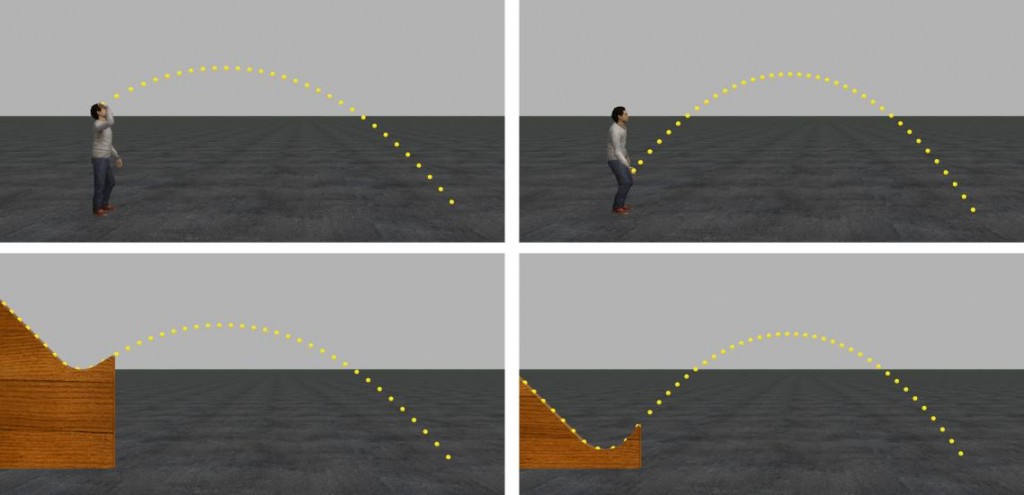Perceptual Evaluation of Motion Editing for Realistic Throwing Animations
In this paper, we study observers’ sensitivity to manipulations of overarm and underarm biological throwing animations.
May 31, 2014
ACM Transactions on Applied Perception (ACM TAP)
Authors
Michele Vicovara (University of Padua)
Ludovic Hoyet (Trinity College Dublin)
Luigi Burigana (University of Padua)
Carol O’Sullivan (Disney Research/Trinity College Dublin)
Perceptual Evaluation of Motion Editing for Realistic Throwing Animations
Animation budget constraints during the development of a game often call for the use of a limited set of generic motions. Editing operations are thus generally required to animate virtual characters with a sufficient level of variety. Evaluating the perceptual plausibility of edited animations can, therefore, contribute greatly towards producing visually plausible animations. In this paper, we study observers’ sensitivity to manipulations of overarm and underarm biological throwing animations. In the first experiment, we modified the release velocity of the ball while leaving the motion of the virtual thrower and the angle of release of the ball unchanged. In the second experiment, we evaluated the possibility of further modifying throwing animations by simultaneously editing the motion of the thrower and the release velocity of the ball, using Dynamic Time Warping. In both experiments, we found that participants perceived shortened underarm throws to be particularly unnatural. We also found that modifying the thrower’s motion in addition to modifying the release velocity of the ball does not significantly improve the perceptual plausibility of edited throwing animations. In the third experiment, we modified the angle of release of the ball while leaving the magnitude of release velocity and the motion of the thrower unchanged, and found that this editing operation is efficient for improving the perceptual plausibility of shortened underarm throws. Finally, in Experiment 4 we replaced the virtual human thrower with a mechanical throwing device (a ramp), and found the opposite pattern of sensitivity to modifications of the release velocity, indicating that biological and physical throws are subject to different perceptual rules. Our results provide valuable guidelines for developers of games and VR applications by specifying thresholds for the perceptual plausibility of throwing manipulations, while also providing several interesting insights for researchers in visual perception of biological motion.

